Three dopamine pathways induce aversive odor memories with different stability
- PMID: 22807684
- PMCID: PMC3395599
- DOI: 10.1371/journal.pgen.1002768
Three dopamine pathways induce aversive odor memories with different stability
Abstract
Animals acquire predictive values of sensory stimuli through reinforcement. In the brain of Drosophila melanogaster, activation of two types of dopamine neurons in the PAM and PPL1 clusters has been shown to induce aversive odor memory. Here, we identified the third cell type and characterized aversive memories induced by these dopamine neurons. These three dopamine pathways all project to the mushroom body but terminate in the spatially segregated subdomains. To understand the functional difference of these dopamine pathways in electric shock reinforcement, we blocked each one of them during memory acquisition. We found that all three pathways partially contribute to electric shock memory. Notably, the memories mediated by these neurons differed in temporal stability. Furthermore, combinatorial activation of two of these pathways revealed significant interaction of individual memory components rather than their simple summation. These results cast light on a cellular mechanism by which a noxious event induces different dopamine signals to a single brain structure to synthesize an aversive memory.
Conflict of interest statement
The authors have declared that no competing interests exist.
Figures
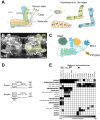
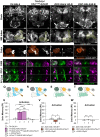
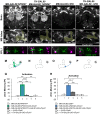
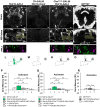
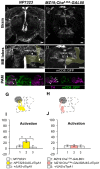



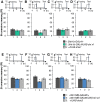


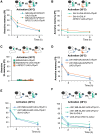

Similar articles
-
Specific dopaminergic neurons for the formation of labile aversive memory.Curr Biol. 2010 Aug 24;20(16):1445-51. doi: 10.1016/j.cub.2010.06.048. Epub 2010 Jul 15. Curr Biol. 2010. PMID: 20637624 Free PMC article.
-
Dopamine is required for learning and forgetting in Drosophila.Neuron. 2012 May 10;74(3):530-42. doi: 10.1016/j.neuron.2012.04.007. Neuron. 2012. PMID: 22578504 Free PMC article.
-
Converging circuits mediate temperature and shock aversive olfactory conditioning in Drosophila.Curr Biol. 2014 Aug 4;24(15):1712-22. doi: 10.1016/j.cub.2014.06.062. Epub 2014 Jul 17. Curr Biol. 2014. PMID: 25042591
-
Roles of feedback and feed-forward networks of dopamine subsystems: insights from Drosophila studies.Learn Mem. 2024 Jun 11;31(5):a053807. doi: 10.1101/lm.053807.123. Print 2024 May. Learn Mem. 2024. PMID: 38862171 Free PMC article. Review.
-
Reinforcement signalling in Drosophila; dopamine does it all after all.Curr Opin Neurobiol. 2013 Jun;23(3):324-9. doi: 10.1016/j.conb.2013.01.005. Epub 2013 Feb 5. Curr Opin Neurobiol. 2013. PMID: 23391527 Free PMC article. Review.
Cited by
-
Direct neural pathways convey distinct visual information to Drosophila mushroom bodies.Elife. 2016 Apr 15;5:e14009. doi: 10.7554/eLife.14009. Elife. 2016. PMID: 27083044 Free PMC article.
-
Dopamine- and Tyrosine Hydroxylase-Immunoreactive Neurons in the Brain of the American Cockroach, Periplaneta americana.PLoS One. 2016 Aug 5;11(8):e0160531. doi: 10.1371/journal.pone.0160531. eCollection 2016. PLoS One. 2016. PMID: 27494326 Free PMC article.
-
Genome-Wide Association Analyses Point to Candidate Genes for Electric Shock Avoidance in Drosophila melanogaster.PLoS One. 2015 May 18;10(5):e0126986. doi: 10.1371/journal.pone.0126986. eCollection 2015. PLoS One. 2015. PMID: 25992709 Free PMC article.
-
Context-dependent representations of movement in Drosophila dopaminergic reinforcement pathways.Nat Neurosci. 2021 Nov;24(11):1555-1566. doi: 10.1038/s41593-021-00929-y. Epub 2021 Oct 25. Nat Neurosci. 2021. PMID: 34697455 Free PMC article.
-
Pharmacological modulation of aversive responsiveness in honey bees.Front Behav Neurosci. 2014 Jan 7;7:221. doi: 10.3389/fnbeh.2013.00221. eCollection 2013. Front Behav Neurosci. 2014. PMID: 24431993 Free PMC article.
References
-
- Medina JF, Repa JC, Mauk MD, LeDoux JE. Parallels between cerebellum- and amygdala-dependent conditioning. Nat Rev Neurosci. 2002;3:122–131. - PubMed
-
- McGuire SE, Deshazer M, Davis RL. Thirty years of olfactory learning and memory research in Drosophila melanogaster. Progress in neurobiology Prog Neurobiol. 2005;76:328–347. - PubMed
-
- Heisenberg M. Mushroom body memoir: from maps to models. Nat Rev Neurosci. 2003;4:266–275. - PubMed
-
- Gerber B, Tanimoto H, Heisenberg M. An engram found? Evaluating the evidence from fruit flies. Curr Opin Neurobiol. 2004;14:737–744. - PubMed
Publication types
MeSH terms
Substances
LinkOut - more resources
Full Text Sources
Medical
Molecular Biology Databases
Miscellaneous

